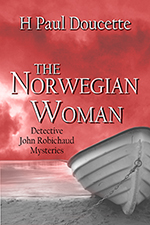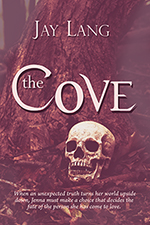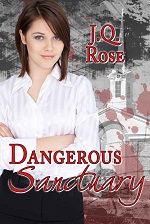Research is my middle name.
I plan family vacations to include possible ‘future book settings’, ‘historical events’, ‘regional foods’—well, you know where I’m going with this.
In the past, research often required hours spent at the public library using the card catalog, or reading microfiche. Oh, how the Internet has simplified my life.
However, breathing life into your heroine, and bringing your story to life, are all elements that writers spend hours and hours perfecting.
Sensory details, setting, motivation, and that ‘something’ which is the spark of each and every story is often elusive. Sometimes, just sometimes, the pieces of your fictional universe fall neatly, and unexpectedly, into place.
This is what happened to me.
While sorting through my closet, I discovered a treasure of carefully-packed-away-items. Being the eldest daughter, I’ve acquired the family photos, was blessed with the oral histories of grandparents and one great-grandmother, as well as that of and other relatives. I carefully placed the items on my bed. I stroking a silk scarf belonging to my maternal grandmother. I focused on the blending of colors and the threads of silver catching the light. This was when I knew I was experiencing an 'important moment' in her life. A snap-shot of who she was, who she wanted to be—a time before she was my grandmother. Before she was married. Before she had a child of her own.
She was a young woman.
Had she gone shopping with her sister or her mother to purchase this scarf? Or had she ridden the EL, after work, to a department store in downtown Chicago?
Was she going to a dance?
To dinner?
Or, to the theater?
Her mother, Marie, was raised on a farm in Bohemia, Czechoslovakia (before it became the Czech Republic). As an adult she moved to Prague, working as a secretary until she married her husband, They had 6 children, my grandmother was the youngest.
In 1898, the family (minus my grandmother, who was born in the United States) boarded a ship and sailed across the Atlantic Ocean to Ellis Island and before settling in Chicago, Ill .
 |
My grandmother in the 1920s working at A.B. Dick.
Which later became Xerox. She became their 1st female supervisor and held
that position until she retired. |
I located pieces of her jewelry, the scarf still smelled faintly of her perfume (or was it simply my memory of her fragrance?), necklaces, earrings, broaches, and bracelets. There was a beaded evening bag. I recalled a photo taken when she and her sister worked as extras in the motion pictures of the 1920 and 1930s. They stayed with their older brother (musician, Tony Lada of the Louisiana Five) in San Monica, California.
Tony (Anton) Lada's band was the first band to tour Europe. He preformed at the Troubadour. He was one of the founding members of SAG . There were so many stories about Jimmy Durante, Bing Crosby, and many more. . .
I was certain I had it in a box, perhaps a few of the pictures had already been scanned to my computer.
The wax music cylinders were all damaged in a flood but I had some sheet music and one '78 record.
Louisiana Five/youtube link
These are the steps that help me discover my heroine and my hero. This is why my characters become living, breathing people to me and to my readers—step by step; their stories are revealed to me as snapshots of pieces of their lives.
Gritty Old Chicago?
The glorious film sets when talking pictures were cutting edge? Or the days of silent movies.
Rudolph Valentino was all the rage (Catch his silent movies on YouTube—he really was was a hottie!)
There are so many wonderful stories in passed down through a family oral history.
The relative who immigrated from Sicily.
I also have my great-great-grandmother’s butter churn from the 1800s— when made the journey from Tennessee via a covered wagon (the Scottish branch of the family tree) but that’s another story.
So, what treasure do you have hiding in your closet?
What stories have your ancestors passed down to you?
What story is waiting to be told?
Thank you for stopping by to read my blog posting.
My current release, "Gumbo Ya Ya" is set in New Orleans and the Louisiana bayou. My husband's family is from Louisiana. New Orleans and The French Quarter are wonderful cities.
Remember, my novels always, always include delicious recipes. And Gumbo Ya Ya, not only has gumbo recipes; but old time pass-down-family recipes, too!
Happy Reading!
Connie
Click on the Book Cover for BUY LINKS
This link takes you to my BWL author page. Just click on the book cover for the buy link!
 |
| At Cafe du Monde |
 Pastor Christine Hobbs
has been in the pulpit business for over five years. She never imagined
herself caring for a flock that includes a pig, a kangaroo, and a
murderer.
Pastor Christine Hobbs
has been in the pulpit business for over five years. She never imagined
herself caring for a flock that includes a pig, a kangaroo, and a
murderer. 














































.jpg)

.jpg)




